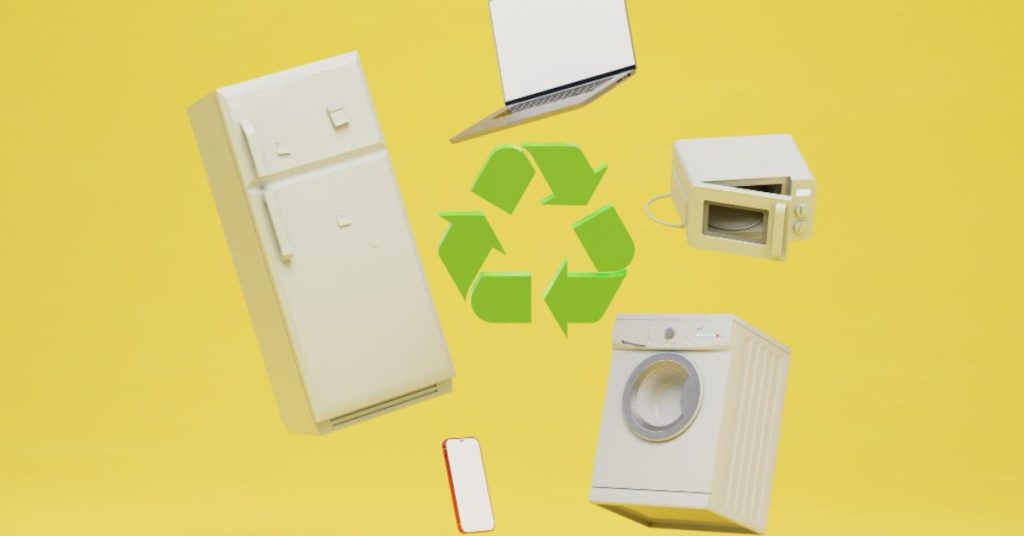Our insatiable appetite for the latest and greatest gadgets has given rise to a growing monster known as eWaste – a menacing electronic beast lurking in our digital lives, waiting to be discarded and left to rot in landfills, poisoning the earth with a toxic brew of chemicals and heavy metals.
In today’s digital age, we are all surrounded by electronic gadgets, from our smartphones to laptops, and televisions to refrigerators. However, as we continuously upgrade to newer models, our old electronic devices often end up in landfills, leading to severe environmental consequences. Electronic waste, or eWaste, is a growing problem globally, and its impact on the environment is a cause for concern. In this blog post, we’ll explore the environmental impacts of eWaste and discuss some sustainable solutions to tackle this problem.
Understanding eWaste
Electronic devices that have reached the end of their usable lives are referred to as “eWaste.” This includes devices like laptops, mobile phones, televisions, printers, gaming systems, and other electronic devices. As technology continues to advance at an accelerated rate and consumers frequently replace their outdated devices with newer, more sophisticated models, eWaste is an issue that is spreading quickly across the globe. When electronic waste is not properly disposed of, it can release toxic chemicals and heavy metals into the environment, presenting a significant health risk to people, animals, and ecosystems.
E-Waste: What does it consist of?
eWaste is a treasure trove of valuable materials that can be reused and recycled. However, it also contains hazardous and toxic chemicals that can harm the environment and human health. eWaste includes electronic devices such as smartphones, laptops, televisions, and other gadgets. These devices contain materials such as copper, gold, silver, and other metals, as well as plastic, glass, and other materials.
However, they also contain toxic chemicals such as lead, mercury, cadmium, and chromium, which can be harmful to the environment and human health. These toxic materials can seep into the soil and groundwater, causing severe damage to the ecosystem. Knowing what’s contained in eWaste is crucial to finding sustainable solutions to this growing problem. By recycling and reusing these valuable materials while safely disposing of toxic chemicals, we can reduce the impact of eWaste on the environment and create a more sustainable future.
Causes of eWaste production
The problems of eWaste are incredibly serious and far-reaching. eWaste is a rapidly growing problem, with over 53 million metric tons generated globally in 2019 alone. This poses a significant threat to the environment and human health. Electronic devices contain hazardous and toxic chemicals such as lead, mercury, and cadmium, which can cause serious harm to the environment and human health when not disposed of properly. Moreover, the improper disposal of electronic devices can lead to the contamination of soil and water sources, resulting in environmental degradation and health problems.
The social and economic impacts of eWaste are also significant, as it affects vulnerable communities, particularly those in developing countries where eWaste is often illegally exported for disposal. The severity of the problems of eWaste cannot be overstated, and urgent action is needed to address this growing problem. By adopting sustainable practices such as recycling and proper disposal of electronic devices, we can mitigate the impact of eWaste and create a cleaner, healthier future.
How severe are the eWaste issues?
The negative effects of eWaste are significant and far-reaching. eWaste ends up in landfills, where it releases harmful chemicals into the soil and groundwater, causing ecological damage and health problems. Additionally, eWaste incineration releases toxic gases, leading to air pollution and respiratory problems.
The social and economic impacts of eWaste are also significant, as it affects vulnerable communities, particularly those in developing countries where eWaste is often illegally exported for disposal. eWaste can also contribute to the depletion of natural resources, as the materials used in electronic devices are often non-renewable. The negative effects of eWaste cannot be ignored, and urgent action is needed to address this growing problem.
Moreover, eWaste can also lead to increased energy consumption and carbon emissions, contributing to climate change.
The solution to eWaste problems: Namo eWaste
Namo eWaste is an innovative solution to the growing problem of eWaste. It is a leading eWaste management company that offers comprehensive eWaste solutions for businesses and individuals. Namo eWaste collects, processes, and recycles electronic devices safely and sustainably, ensuring that hazardous and toxic chemicals are disposed of correctly, and valuable materials are reused.
They have state-of-the-art facilities that use the latest technology to recycle eWaste, creating a circular economy that reduces the strain on natural resources.
We also offer data destruction services, ensuring that sensitive information is securely erased from electronic devices. By partnering with Namo eWaste, businesses, and individuals can rest assured that their eWaste is handled responsibly and sustainably, creating a cleaner, healthier future for everyone. The solution to eWaste problems lies in adopting sustainable practices such as those offered by Namo eWaste, where eWaste is recycled and reused, reducing the impact on the environment and human health.
Small steps towards Sustainability
The environmental impacts of eWaste are significant, and we need to take action to tackle this problem. By adopting sustainable solutions such as recycling, reusing, donating, and creating awareness, we can reduce the amount of eWaste generated and preserve our planet’s resources. So, let’s all take a step towards a cleaner and greener future by being responsible and taking care of our electronic devices.


